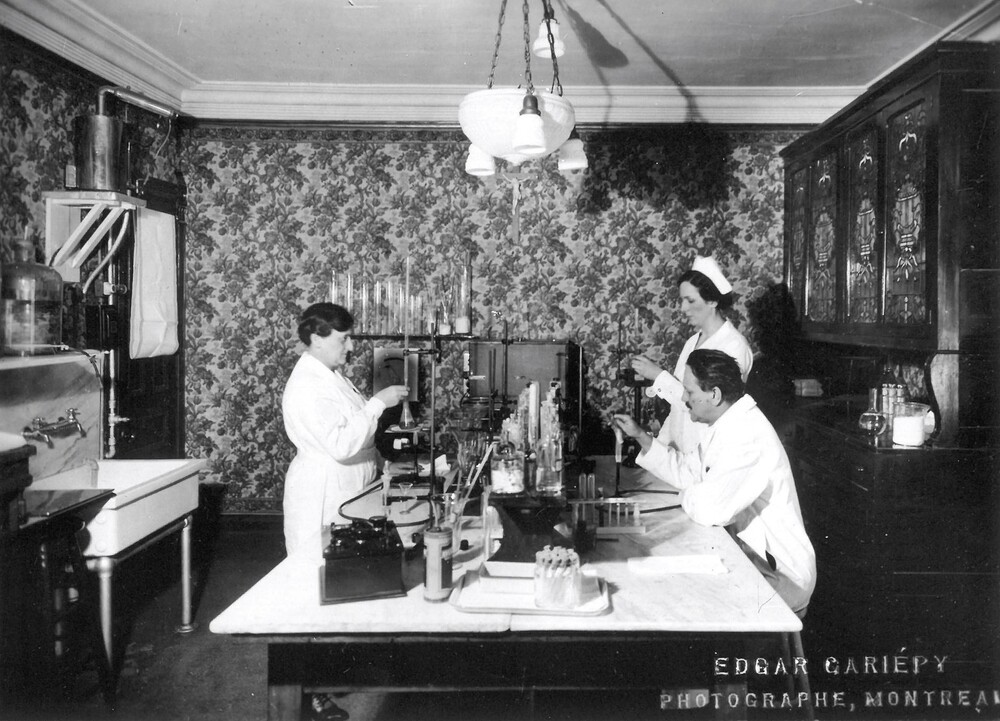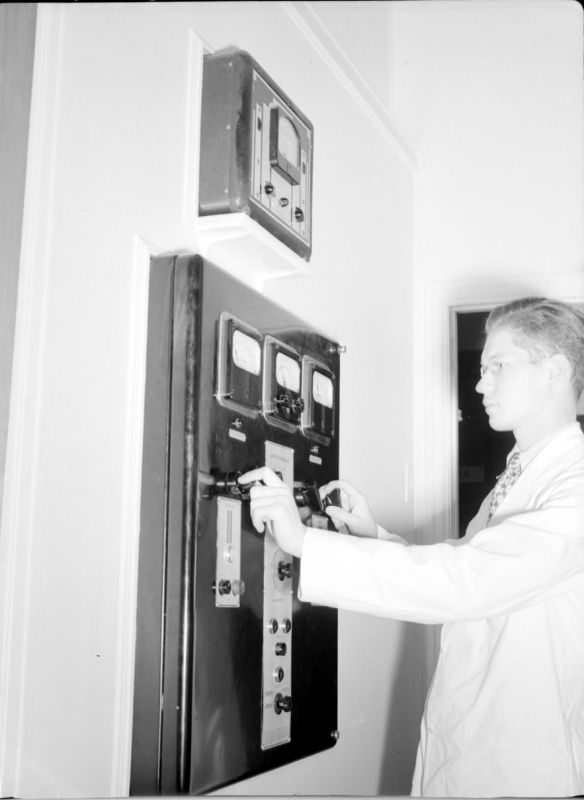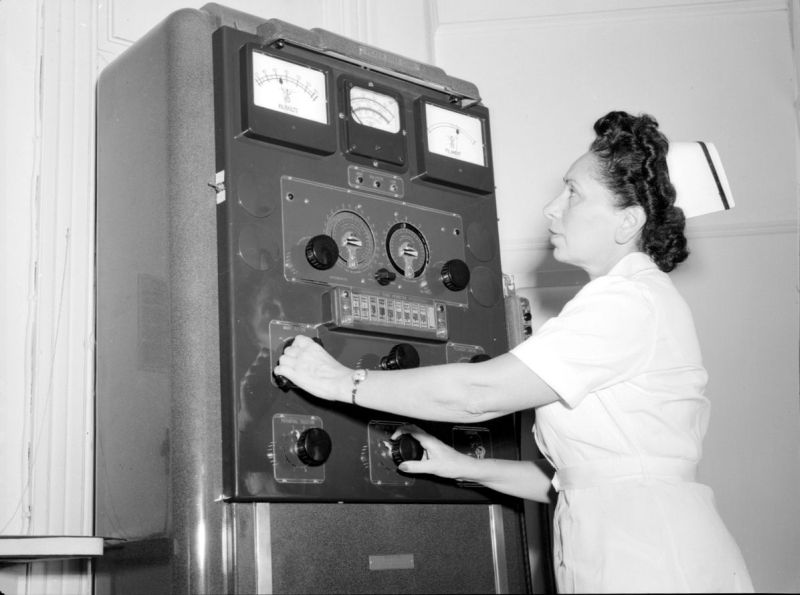Health and Safety at the Institute
The Radium Institute was not a safe work environment. Most machines used very high-voltage and would regularly short-circuit, sometimes electrocuting workers, or catching on fire! This was the case for radiologist Albert Jutras who, in 1936, “in seconds, found himself surrounded by flames and burnt on a significant portion of his body.”
Even at the time, exposure to radium and X-rays was known to be hazardous for human health. Still, the Institute delayed implementation of safety protocols for its employees. For instance, a letter of grievances written in 1946 by the Institute’s staff mentioned that “safety measures against the dangers of radiation have always been rudimentary and insufficient. To this day a technician and a nurse have both died from anemia due to radiation.” Nurse Dalphond, a member of the Institute’s staff, believed that it was her faith in God which explained her remaining in good health despite the lack of protection offered by the Institute :
[Nurse Dalphond] admits she had worked in terrible conditions in the past. If she had known the power of the metal from which she directed radiation, she said, she would never have dared to use it so freely and without protection.
To make matters worse, in addition to all the dangers employees were exposed to, no insurance company would cover them in case of an accident. The hazardous nature of the machines and the pervasiveness of radioactivity during procedures forced the Institute to create its own compensation fund for work-related injuries. In the 1940s, besides working in facilities that threatened their physical health, staff members and doctors were also complaining about a toxic work environment.





